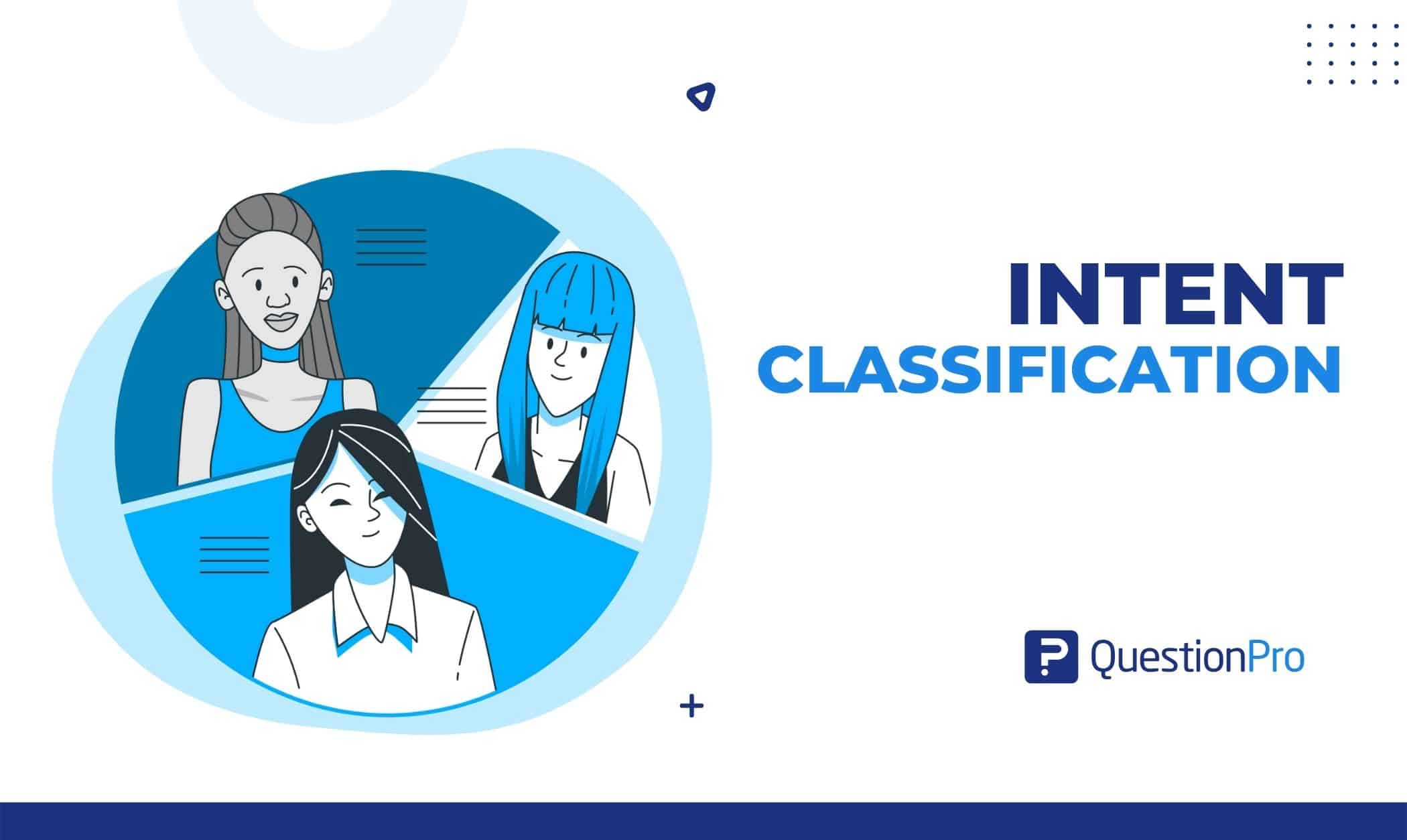
Due to increased competition, customers now have more alternatives than ever. Providing high-quality customer service is now one of the essential things firms can do to remain competitive. A notion from natural language understanding is used in intent classification (NLU-natural language understanding). Studies show that:
- One-third of consumers would abandon a beloved brand after only one negative encounter.
- Following a good encounter, 70% of consumers suggest the brand to friends.
The goal of Natural Language Understanding (NLU), a branch of Natural Language Processing (NLP), is to improve machine reading comprehension by examining the grammar and context of words. Businesses may better understand their clients and enhance the customer experience by using AI technologies in customer care, such as chatbots and personalization.
This blog will explain intent classification and the methods used with examples.
What is intent classification?
Intent classification puts phrases into groups based on what they mean. The meaning shows what the speaker meant to say. You can use the default system intents in your app or make custom intents for specific tasks (most developers make custom intents for apps ).
For example, greetings, agreements, disagreements, money transfers, taxi orders, or anything else you might need could be put into different intent classifications.
The model sorts each phrase into three groups: single, multiple, or none.
To make a model for classifying intents, you need to define training examples in the intents section of the file. You can learn more about how to do it by reading the documentation. Don’t forget to link the dataset file to the application. Also, keep in mind that custom intents can work with system intents at the same time.
Ways to use intent classification with examples
Automatically linking words or sentences with specific intent is achieved by intent classification, which combines machine learning and natural language processing. A machine learning model, for instance, can discover that phrases like “purchase” or “acquire” are frequently linked to the intention to buy.
But first, text examples, often known as training data, are needed to train intent classifiers. When examining customer emails, you could pick up tags like:
- Interested
- Need Information
- Unsubscribe
- Wrong Person
- Email Bounce
- Autoreply, etc.
When your tags are set, you can start using relevant text examples for each tag to train your intent classifier.
Take, for instance: “I attempted to purchase anything after seeing it on the website, but I’m not sure how to get started. Would you be able to assist me?” You may flag this email as interesting if you like.
The more examples you give the model, the more intelligent your intent classifier will be because it will have more information to learn from.
Intent detection can be enhanced by combining it with text extraction to find specific information in text, such as dates, locations, firm names, and other things connected to a user’s intent.
For example, if you get the message, “I want to book a flight from Canada to the USA, but my card was declined,” an intent classifier would classify it as an intent to book a flight. A text extractor would pull out the entities “Canada” and “USA.”
The usefulness of intent classification
Businesses can become more customer-centric by classifying their customers’ intentions, especially in sales and customer service areas. Intent classification can be crucial for many tasks, including responding to leads more quickly, handling inquiries, and providing individualized service.
Here are a few benefits in more detail:
-
Utilize every chance to sell.
Automatically detecting purchase intents is vital for sales and customer service since it allows organizations to act fast and convert leads into paying customers. The faster teams reply to purchasing intentions, the greater their odds of closing a contract.
Some clients demand a response within 6 hours. Suppose a Facebook user asks for product availability. With an intent classifier, you can rapidly identify an interested client and contact them to increase sales.
-
Scale as you expand
Even when firms are bombarded with data, intent classifiers can identify potential clients and direct their queries to sales personnel. Machines operate quicker than humans, nonstop, and don’t get weary, so they never miss a sale.
-
Reliable standards
Machines always use the same settings and criteria to process data. The consistency in measures ensures that all consumer intentions are examined under the same standards, protocols, and algorithms. It lowers errors and enhances data accuracy.
-
Increase sales conversions
Launching a marketing campaign and receiving customer interactions may use intent classifiers to identify high-intent buyers and engage them immediately. So, your conversion rates go through the roof.
-
Sales campaign analytics
With explicit intent recognized automatically in your sales and marketing activities, you may quickly build reports based on valid data regarding conversion rates, interested customers, upsell prospects, and more.
Conclusion
Intent classification can be your best friend if you want to turn leads into customers. Using AI to your advantage, you can look at many interactions between your users and potential customers and automatically figure out what each one is about.
As soon as you automate this task, you can immediately take action and get in touch with qualified leads. If you want to see how intent classification can help you sort your customer data, you can request a demo, and our team will help you get started.
QuestionPro is an excellent alternative if you seek more than simple survey software. They will receive your questionnaires, allowing you to begin gathering information. You can find all the resources you need for research on QuestionPro.







